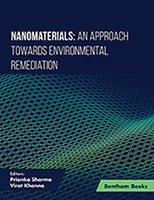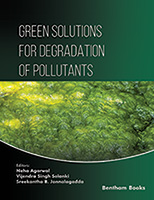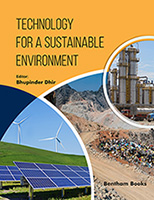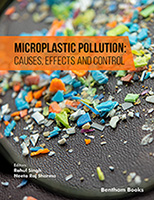Interest in solid and hazardous waste management is relatively recent, i.e., in the last three decades, and is driven by regulations in most countries. It began with industrial hazardous waste, followed by municipal solid waste, and subsequently by many other categories of waste. This book features chapters discussing the implications of healthcare waste management and their impact on groundwater and other parts of the environment, as well as principles of as sustainable management and its application in the reuse and recycling of such kind of waste. Moreover, it includes examples of waste to energy. It also covers topics such as life cycle assessment as a tool for developing healthcare integrated waste management systems and an overview of waste management rules, illustrating the importance of technological inputs in the development of regulatory frameworks. This subject matter should be examined with a global standpoint in order to bridge the knowledge gap. Different chapters analyze the management of healthcare waste around the globe and specifically in different countries where it is in a deplorable state and stands out as a major risk factor to the health of both healthcare workers and individuals/communities in and around the healthcare facilities. There is a need to institutionalize healthcare waste management as part of the overall management system of a particular healthcare facility. In addition, healthcare waste management needs to intervene at other higher levels i.e. district, regional and national levels such that these levels will be positioned to provide the necessary or required support to facility and community levels in all matters related to healthcare waste management. The significant support expected from the national, regional and district levels includes, among others, the development of the required policies, legal/regulatory framework and ensures adequate budgetary allocations to meet healthcare waste management input requirements.
In this scenario, it is important to point out that medical care plays a vital role in our life and health. Still, the waste generated from medical activities represents a real problem of living nature and human world. For this reason, the appropriate methods for waste neutralization, recycling and disposal should be identified such management [1]. In particular, all processes should ensure both proper hospital hygiene and safety of health care workers and communities. Among biomedical waste, some chemical and pharmaceutical products that can cause poisoning by absorption through the skin or mucous membranes, by inhalation or by ingestion. Furthermore, they could provoke lesions of skin, eye, and respiratory mucosa. For example, chemical waste an or pharmaceuticals (such as antibiotics or other drugs, heavy metals, disinfectants and antiseptics) removed by the drainage system may cause toxic effects on ecosystems. Furthermore, the elimination of biomedical waste should be associated with safe waste management to protect the human health and the environment. Incineration of medical waste can be very dangerous since the plastic (containing chlorine) derived from such waste generates dioxin. Once formed, dioxin (that is carcinogenic) is able to bind to organic particles. Therefore, it is transported by wind and deposited on land and in water. The half-life of such compound is 25 to 100 years. Furthermore, dioxin it is able to link to nuclear DNA. Its formation is associated to potential cancer promoter, weak-delete immune response and other harmful effects on human health (such endometriosis, birth defects, low testosterone levels) and environment. Also, exposure to low dioxin concentrations causes negative effect on human health. The introduction of a sustainable system of biomedical waste management might allow to store a significant amount of hazardous biomedical waste in safe manner, and it will be possible to recover, treat, neutralize and recycle in terms of environmental protection. Therefore, waste recycling could play a crucial step in the reduction of earth resources. Furthermore, efficient health care waste management can be associated with the control of different diseases (hospital acquired infections), and reduction of community exposure to resistant bacteria. In addition, it could lead to the decrease of sepsis, and hepatitis transmission from dirty needles or uncleaned medical items. In this scenario, a sustainable management system of biomedical waste it is necessary to avoid the harm human health effects.
Furthermore, the coronavirus disease 2019 (COVID-19) pandemic has led to a great increse of medical and domestic waste. In this context, the safe managing of this waste plays a crucial role to successfully containing the disease. Therefore, the current pandemic brings a new challenge for medical waste management in every country.
In this context, some chapters of this book underline the relationship between adverse health effects due to waste management practices, in particular of hazardous waste, that potentially represent a public health issue in many countries because of growing waste production, inadequate waste management practices, lack of appropriate legislation and control systems, as well as of growing illegal hazardous waste transboundary movements [2, 3].
In this frame, various chapters describe different aspects on the occurrence and severity of health effects related to illegal waste disposal in Campania, an Italian region. Since 1980, this region has been characterized waste mismanagement [4-7], which led to the deterioration of land, as well as ground and surface water, also impacting air quality. In recent times, some oncologists, pathologists and toxicologists have reported that the continuous exposure of Campania citizens to toxic contaminants produced by the illegal dumping of waste in the region could become a big health issue. Furthermore, in these years, many grassroots movements against waste mismanagement are born in Campania. For example, in 2012, three main groupings of associations: Fires Coordination Committees, Campania Citizens for an Alternative Waste Management Plan, and Commons Net have created a social coalition called Stop Biocide [8]. Today, the citizens fight to obtain:
-
a better management of urban waste.
-
the remediation of the contaminated sites.
-
the halting of illegal waste trafficking.
-
a systematic health screening of the Campania population who live close to illegal dumping of toxic waste.
The faces of the children, who died and continue to die from cancer, represent the icons of biocide movement and they are shown during several demonstrations in the region. Furthermore, the movement has sent to the President of the Italian Republic and Pope Francis a lot of postcard with their faces printed on them to ask for direct intervention [9, 10].
Moreover, an article entitled “Triangle of death” linked to waste crisis, was published in The Lancet Oncology [11], and the authors reported a possible correlation between hazardous waste and high incidence of cancer in Naples and Caserta provinces. In this regard, people living close to illegal waste sited located in different municipalities of Naples and Caserta reported some adverse health effects. Many descriptive studies reported an early mortality rate (0–14 years) and congenital malformations. Furthermore, the cause-specific mortality and morbidity rates in Campania are very different when compared with the Italian national average. Future studies should be carried out to better understand the correlation between waste-related exposures and health profile of the Naples and Caserta provinces by analysis of mortality, hospital discharge records, cancer incidence, congenital malformations in newborns.
I recommend this book since it offers a broad look on the interaction between hazardous waste management and human health impacts. Through the chapters, it examines the way we affect and disrupt our health and the health of ecosystem around us. Now I believe that we have got to work together for the future. If we change now, we have an opportunity to decide what kind of world our children and our grand children and their children will grow up in.
Green Economics Institute Economics and Social and Environmental Justice Http://www.greeneconomicsinstitutetrust.org/
REFERENCES
[1] McDougall F, White P, Franke M, Hundle P. Integrated Solid Waste Management: A Life Cycle
Inventory OxfordBlackwell Science Edition2001.
[http://dx.doi.org/10.1002/9780470999677]
[2] Harjula H. Hazardous waste: recognition of the problem and response. Ann N Y Acad Sci 2006; 1076:
462-77.
[http://dx.doi.org/10.1196/annals.1371.062] [PMID: 17119225]
[3] Senior K, Mazza A. Triangle of death linked to waste crisis. Lancet Oncol 2004; S5(9):525-7.
HYPERLINK. https://www.ncbi.nlm.nih.gov/pubmed/15384216
[4] Piscitelli P, Santoriello A, Buonaguro FM, et al. Human Health Foundation Study Group. Incidence of
breast cancer in Italy mastectomies and quadrantectomies performed between 2000 and 2005. J Exp
Clin Cancer Res 2009; 19:28:86. https://www.ncbi.nlm.nih.gov/pubmed/19545369
[http://dx.doi.org/10.1186/1756-9966-28-86]
[5] Altavista P, Belli S, Bianchi F, et al. Cause-specific mortality in an area of Campania with numerous
waste disposal sites. Epidemiol Prev 2004; 28(6): 311-21.
[6] Greyl L, Vegni S, Natalicchio M, Cure S, Ferretti J. The Waste Crisis in Campania, Italy 2010 Sito
web CEECEC (disponibile in linea: http://www.ceecec.net/case-studies/waste-crisis-incampania-italy/
[7] Trinca S, Comba P, Felli A, Forte T, Musmeci L, Piccardi A. Childhood mortality in an area of
southern Italy with numerous dumping grounds: Application of GIS and preliminary findings. In
Proceeding of the First European Conference “Geographic Information Sciences in Public Health”,
Sheffield, UK, 19–20 September 2001; p. 19.
[8] De Rosa PS. The remaking of toxic territories: grassroots strategies for the re-appropriation of
knowledge and space in the socio-environmental conflicts of Campania, Italy. Presented at the
Political Studies Association Conference; Voice and Space: new possibilities for democracy in
Southern Europe? Manchester, 2014, April 14-16.
[9] Iengo I, Armiero M. The politicization of ill bodies in Campania, Italy. J Polit Ecol 2017; 24: 44-58.
[http://dx.doi.org/10.2458/v24i1.20781]
[10] D'Alisa G, Germani AR, Falcone PM, Morone P. Political ecology of health in the land of fires: A
hotspot of environmental crimes in the south of Italy. J Politic Ecol 2017; 24:59-86.
[11] Senior K, Mazza A. Italian “triangle of death” linked to waste crisis. Lancet Oncol 2004; 5(9): 525-7.
[http://dx.doi.org/10.1016/S1470-2045(04)01561-X] [PMID: 15384216]
Miriam Kennet
Chartered Institute of Purchasing and Supply- MCIPS,
Alumna of the Month South Bank University,
London,
Editor Green Academic Journal,
Director CEO The Green Economics Institute
Head of United Nations Delegation to the COP Climate Conferences





